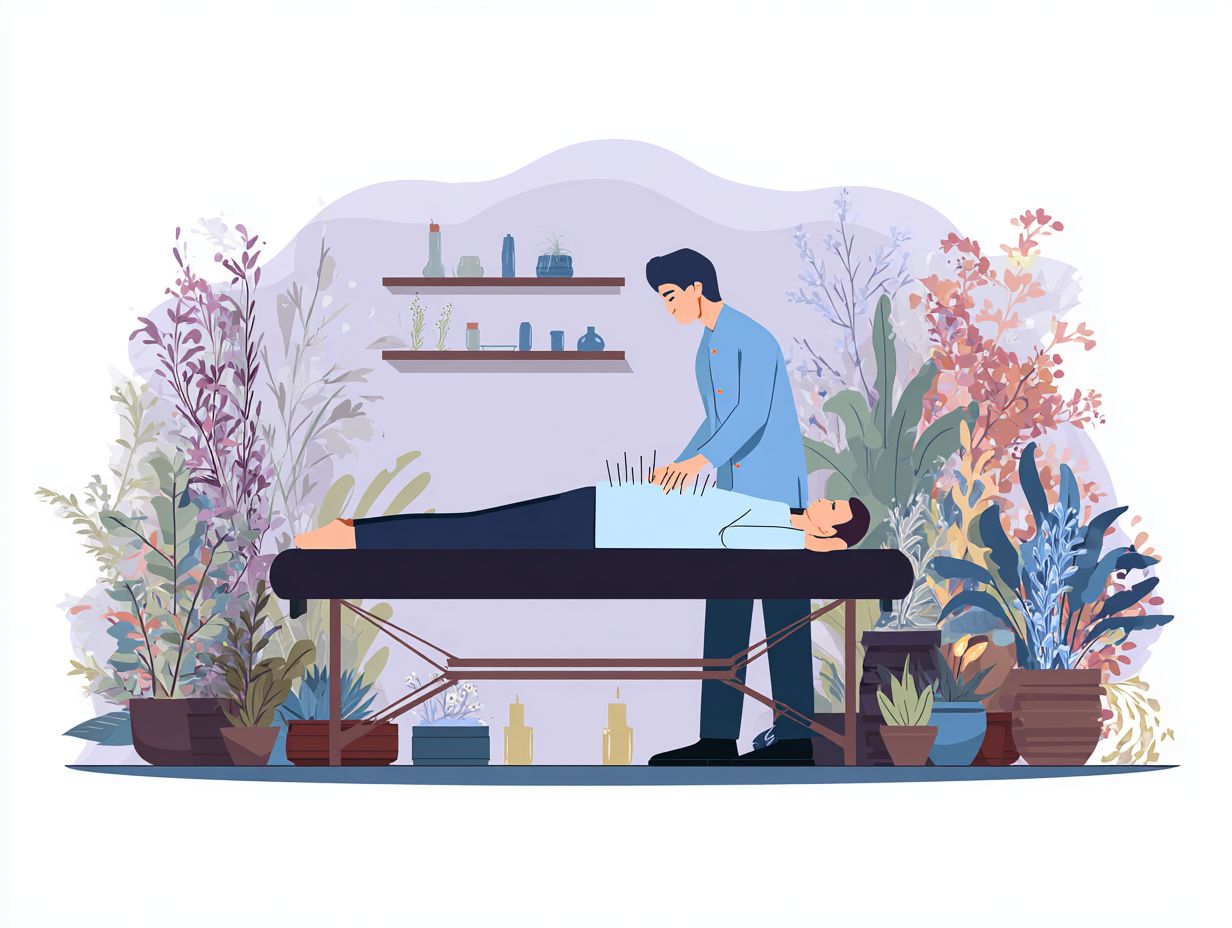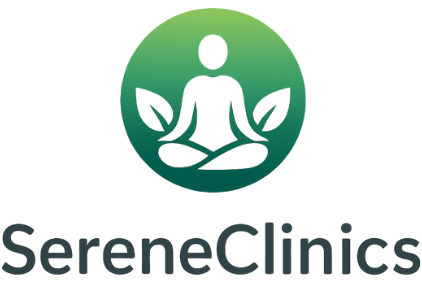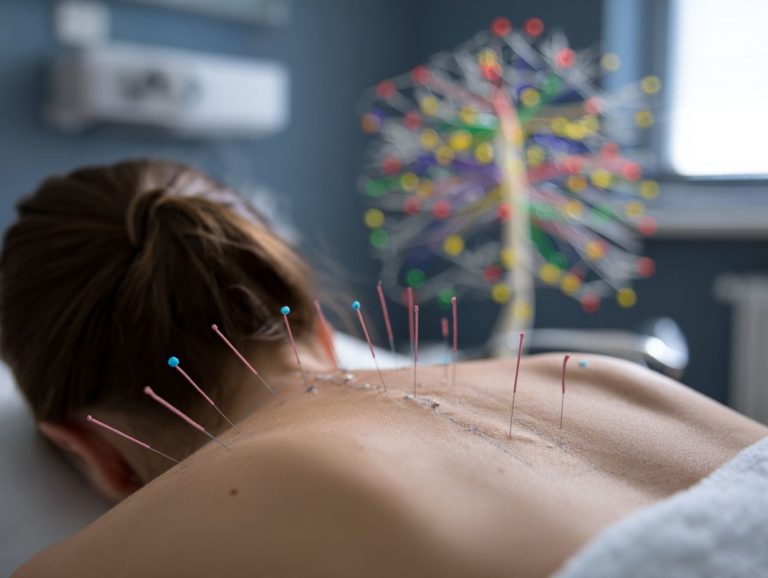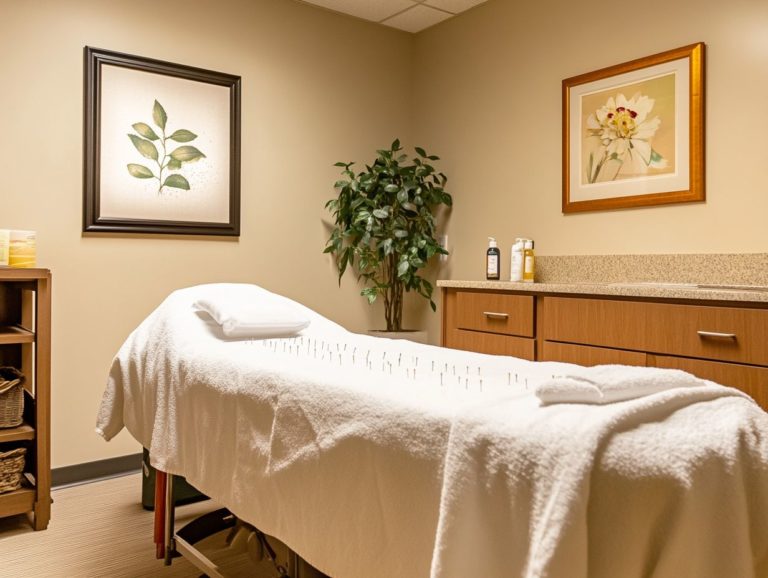Acupuncture: Techniques, Benefits, and Stress Relief
Acupuncture, a key component of traditional Chinese medicine, has become popular as a complete method for improving health and well-being.
This article explains what acupuncture is, how it functions, and the different methods used during treatment.
From pain relief to stress reduction and improved sleep We look at the many advantages of acupuncture.
You will also learn what to expect during a session and the safety considerations to keep in mind.
Learn how acupuncture can improve health and help a balanced lifestyle.
Key Takeaways:
- Acupuncture uses thin needles to stimulate specific points on the body and can be used to address a variety of health issues.
- The techniques of TCM, electroacupuncture, and auricular acupuncture are commonly used in acupuncture treatments.
- Acupuncture can help relieve pain, lower stress and anxiety, improve sleep, and strengthen the immune system.
Contents
- 1 What is Acupuncture?
- 2 How Does Acupuncture Work?
- 3 What Techniques Are Used in Acupuncture?
- 4 What Are the Benefits of Acupuncture?
- 5 Acupuncture Benefits Statistics
- 6 What to Expect During an Acupuncture Session?
- 7 Is Acupuncture Safe?
- 8 How Can Acupuncture Help with Stress Relief?
- 9 Frequently Asked Questions
What is Acupuncture?

Acupuncture is a treatment from Traditional Chinese Medicine (TCM) that uses thin needles placed at specific spots on the body to help with healing and balance.
It is often used for treating things like chronic stress, pain relief, and improving overall health.
Recently, controlled studies have been done to test how well it works, with different patient factors affecting the results. Research published in JAMA Network highlights the effectiveness of acupuncture in managing chronic pain, adding substantial credibility to its therapeutic benefits.
How Does Acupuncture Work?
Acupuncture works by stimulating specific acupuncture points to influence the body’s energy flow, or Qi, which promotes healing and reduces stress levels, thereby potentially lowering cortisol levels. This traditional practice has demonstrated effectiveness in modulating the nervous system and achieving treatment feasibility in various clinical settings. For context, a detailed article by Frontiers in Neuroscience delves into the neural mechanisms and effects of acupuncture for central nervous system regulation.
Acupuncture targets specific points on the body to interact with complex systems like the hormonal and immune systems, helping improve general health. For those interested in understanding how these points are precisely identified and manipulated, a deep dive into acupuncture points, techniques, and sensations provides valuable insights.
Stress, often characterized by heightened sympathetic nervous activity, can be mitigated through this ancient method, allowing for a balanced autonomic response.
Knowing the difference between real acupuncture, which follows traditional methods, and fake acupuncture, used as a placebo in studies, emphasizes the importance of treatment plans designed for each person.
These differences are important for evaluating how well acupuncture works, especially for stress-related issues, and highlight the need for individualized treatment in healthcare.
What Techniques Are Used in Acupuncture?
Acupuncture includes different methods, each meant to tackle specific health issues using various approaches.
Techniques like Traditional Chinese Medicine (TCM) acupuncture, electroacupuncture, and auricular acupuncture use their own ways to activate acupuncture points, improving treatment plans customized for personal needs and conditions. For those interested in how these techniques specifically target acupuncture points, our guide on needle placement and techniques offers valuable insights into the process.
1. Traditional Chinese Medicine (TCM)
Traditional Chinese Medicine (TCM) forms the foundation of acupuncture, emphasizing the balance of Qi within the body to promote health and well-being. Acupuncture in TCM helps with different health problems, improves health quality, and brings balance.
Traditional Chinese Medicine is based on the concept of Yin and Yang, which are two opposing forces in nature that need to be balanced.
Qi, often called the essential energy or life force, moves through a series of pathways known as meridians, helping organs and systems communicate.
By carefully stimulating certain points along these meridians, acupuncture helps with conditions like long-lasting pain, anxiety, and digestive issues. It also helps improve general well-being by encouraging the body’s natural healing processes.
This approach focuses on preventing health issues and keeping balance, providing useful options for those looking for different healthcare methods.
2. Electroacupuncture
Electroacupuncture is a new version of traditional acupuncture. It uses electrical currents on acupuncture needles to improve pain relief and reduce stress. Research shows this method works well in clinical studies, making it a key part of treatment plans.
The integration of low-frequency electrical stimulation offers a unique mechanism, allowing practitioners to customize treatments based on individual patient needs.
Research shows that electroacupuncture helps with pain relief for fibromyalgia and osteoarthritis, and may also help reduce symptoms of anxiety and depression, as noted in a relevant study published in ScienceDirect.
Research indicates that electroacupuncture can help speed up recovery after surgery and improve general health.
Its potential to trigger the release of endorphins and influence brain chemicals makes it a strong candidate for more use in medical treatments and overall health approaches.
3. Auricular Acupuncture
Auricular acupuncture focuses on stimulating specific acupuncture points on the ear, believed to correspond to various bodily functions and conditions. This technique has gained attention for its treatment feasibility in addressing somatic symptoms and stress-related disorders.
Practitioners use this method to help with problems like chronic pain, anxiety, and addiction by focusing on the complex links between the ear and other body parts.
Through targeted stimulation, auricular acupuncture can facilitate a balancing effect on the nervous system, promoting relaxation and overall well-being.
Ear acupuncture is different from regular body acupuncture as it uses fewer needles only in the ear. This makes it a less intrusive choice for those who are uncomfortable with needles.
Many healthcare providers now use this technique in detailed treatment plans for different medical conditions because it is effective and easy to access.
What Are the Benefits of Acupuncture?
Acupuncture offers more than just relief from pain. It can greatly improve overall health, help manage ongoing stress, and lower anxiety levels as shown by tools like the Generalized Anxiety Disorder Scale. Acupuncture Benefits Statistics
This method treats both physical and mental health problems together, emphasizing the importance of balancing energy flow through techniques rooted in traditional practices. For a deeper understanding of how this energy flow concept plays a crucial role in traditional Chinese medicine, check out Acupuncture in Traditional Chinese Medicine: Energy Flow.
Acupuncture Benefits Statistics
Acupuncture Usage and Benefits: Conditions Treated by Acupuncture

Acupuncture Usage and Benefits: Session Information
Acupuncture Usage and Benefits: Practitioner and Safety
The Acupuncture Benefits Statistics This data set gives a complete overview of how well acupuncture works and its safety as a treatment method. With its roots in traditional Chinese medicine, acupuncture is increasingly recognized in Western medicine for its therapeutic benefits across various conditions.
Acupuncture Usage and Benefits data highlights the range of conditions where acupuncture is effective. Notably, 80% of patients experience relief from pain, underscoring acupuncture’s role as a viable pain management technique. Additionally, the 85% success rate in reducing nausea positions acupuncture as a supportive therapy, particularly beneficial for patients undergoing chemotherapy or post-operative recovery. Furthermore, 77% of patients report stress reduction Highlighting acupuncture’s role in mental health care and overall well-being.
- Session Information: A typical acupuncture session involves an average of 10 needles, carefully placed to stimulate specific points on the body. Each session lasts about 60 minutes, allowing sufficient time for the body to respond and for patients to relax and benefit from the treatment.
- Practitioner and Safety: Safety is paramount, with 99% of practitioners using sterile needles, minimizing infection risks. Only 10% of patients report minor side effects, such as slight bruising or dizziness, indicating that acupuncture is largely a safe practice when performed by qualified professionals.
The Acupuncture Benefits Statistics demonstrate acupuncture’s effectiveness in treating pain, nausea, and stress, along with its high safety standards. This data underlines acupuncture’s growing acceptance and integration into modern healthcare, offering patients an alternative or complementary approach to conventional medical treatments.
1. Pain Relief
Acupuncture is widely recognized for its ability to provide pain relief, particularly in chronic pain conditions, by targeting specific acupuncture points that influence somatic symptoms and the body’s pain perception pathways.
This ancient practice involves inserting thin needles into designated points on the body, stimulating the release of endorphins and other neurotransmitters that can significantly alleviate discomfort.
Clinical studies have demonstrated that acupuncture reduces pain and improves life quality for patients with health issues like migraines, arthritis, and lower back pain.
Treatment methods often include multiple sessions customized for the person’s requirements, concentrating on quick relief and benefits for lasting health.
As a complementary approach, this modality can effectively bridge gaps in conventional treatment methods, demonstrating its potential for significant pain relief outcomes.
2. Stress and Anxiety Relief
Acupuncture effectively addresses chronic stress and anxiety by promoting relaxation and reducing cortisol levels, which contributes to improved mental well-being as reflected in assessments like the Generalized Anxiety Disorder Scale.
Recent studies support this claim, demonstrating significant decreases in both anxiety symptoms and physiological stress markers in individuals receiving acupuncture compared to control groups.
One such study published in the Journal of Alternative and Complementary Medicine followed participants over an eight-week period, revealing that those who underwent regular acupuncture sessions reported better emotional regulation and lower stress levels.
These effects mainly work by adjusting the nervous system. Acupuncture targets certain areas linked to the calming part of the nervous system, which helps increase relaxation and blood flow.
By including acupuncture in their treatment plans, practitioners can provide patients with methods that address both their mental and physical health, leading to a more balanced and strong state of being.
3. Improved Sleep
Improved sleep quality is another significant benefit of acupuncture, as it addresses underlying issues such as stress and anxiety, thereby enhancing overall health-related quality of life and treatment feasibility.
Studies have found that acupuncture might be important for improving sleep by targeting certain areas that help control the body’s normal sleep patterns.
In clinical studies, patients receiving regular acupuncture treatments reported a marked decrease in insomnia symptoms, as well as an improvement in sleep duration and quality.
By concentrating on areas that often contribute to stress and worry, acupuncture helps people relax and works to bring the body back into balance.
The complete method of acupuncture is a good choice for those looking for non-drug treatments for sleep problems.
4. Enhanced Immunity
Acupuncture can improve the body’s ability to fight off illnesses and reduce stress, leading to better overall health and well-being.
This practice targets certain areas on the body, which can trigger the release of different body chemicals and hormones, helping to adjust immune responses.
Studies show that these interactions can help control inflammation and make more white blood cells, which are important for the body’s defense against infections and illness.
Acupuncture can lower stress, which is important because long-term stress harms the immune system. By using acupuncture as part of their health routines, people may see stronger immune systems and feel better overall.
What to Expect During an Acupuncture Session?
During an acupuncture session, clients will have a detailed consultation to identify their needs. This is followed by inserting needles at specific points to get the best results.
Knowing how the treatment works is important for getting participants and making sure they have a good experience.
1. Consultation and Assessment

The first consultation and evaluation in acupuncture include collecting detailed information about the participant to develop a specific treatment plan that fits personal health needs and issues.
During this important stage, doctors ask detailed questions about medical history, lifestyle, and symptoms to fully comprehend the person’s health.
Assessments may include pulse diagnosis, tongue examination, and discussions about emotional health and stress levels. This thorough evaluation helps acupuncturists see both the immediate problems and the root causes affecting the client’s health.
The information collected during this consultation plays a big role in planning the following treatment sessions. This helps improve how well acupuncture works as a whole healing method.
2. Needle Insertion
Needle insertion is a critical component of acupuncture, where practitioners skillfully place needles at designated acupuncture points to stimulate healing and alleviate symptoms, guided by an established treatment protocol.
This process depends on correctly identifying these points and knowing how the human body works. Practitioners use different methods, such as how they insert and how deep they go, to make the treatment work better and feel more comfortable.
Different tools, including filiform and electro-acupuncture needles, aid in this practice, each designed to address specific patient needs. Many patients often express concerns about pain or anxiety related to needle insertion, yet practitioners reassure them that the needles are exceptionally thin and typically cause minimal discomfort.
Dealing with these usual concerns can improve the overall acupuncture experience.
3. Needle Manipulation
After inserting the needle, practitioners might use needle techniques to improve therapeutic effects, which can greatly affect treatment results and effectiveness.
These manipulation methods, such as lifting, thrusting, or twisting the needles, are designed to stimulate the body’s energy pathways, known as meridians, and can affect how quickly and effectively healing occurs.
Different techniques may evoke varying sensations, from a mild tingling to a more intense feeling of release, allowing the practitioner to tailor the treatment experience to the individual’s needs.
The depth and angle of needle insertion can affect the outcomes, providing a range of benefits such as pain relief and better emotional health.
By using these methods, acupuncturists can help their patients heal better, providing treatments that are specific to each person’s needs.
4. Needle Removal
Needle removal is the final step in an acupuncture session, where practitioners carefully extract the needles, concluding the treatment protocol and assessing participant reactions to gauge effectiveness.
Once the needles are removed, many patients report a sensation of relaxation and a release of tension, often describing it as a weight being lifted. Practitioners usually take this moment to ask about any immediate changes in symptoms or overall feelings.
Aftercare advice may include recommendations to drink plenty of water, to allow the body to flush out toxins, and to avoid strenuous activities for the rest of the day.
Participants should keep a balanced diet and think about attending more sessions if they noticed good results, as these can improve the lasting effects of acupuncture treatments.
Is Acupuncture Safe?
Acupuncture is usually safe when done by trained professionals, but it can have side effects and risks, especially for some people.
These issues need to be recognized and handled, often needing ethical approval in medical settings.
1. Potential Side Effects
While acupuncture is generally safe, possible side effects may include small bruises, soreness, or tiredness after treatment, which should be talked about considering the individual’s traits and treatment plans.
Factors such as the person’s overall health, the specific conditions being treated, and the experience level of the practitioner can all play significant roles in the manifestation of these side effects.
People with some health issues or on certain drugs might be more sensitive to acupuncture, which can cause more discomfort.
Treatment protocols that involve deeper needle insertion or multiple points may also contribute to the variability in side effects experienced.
It is essential for individuals to communicate openly with their acupuncturists about any prior reactions and pre-existing health issues to tailor the approach accordingly.
2. Risks for Certain Groups
Pregnant women and people with bleeding disorders might have particular risks with acupuncture. So, it’s important to choose participants carefully and follow ethical guidelines to keep everyone safe.
These groups might have specific physical reactions or issues during acupuncture treatment. This highlights the need for practitioners to have special training and thorough knowledge of these conditions.
Ethical issues are very important, as professionals must carefully handle informed consent to make sure patients completely understand the possible risks.
Practitioners should be familiar with any contraindications that might apply to these vulnerable groups to mitigate risks effectively. The integrity of acupuncture as a therapeutic modality relies heavily on knowledgeable practitioners who prioritize patient well-being and adhere to established ethical standards.
How Can Acupuncture Help with Stress Relief?
Acupuncture can greatly help reduce stress by helping the body relax and manage its stress reactions. This is demonstrated by reduced cortisol levels, making it a helpful way to manage continuous stress. Worth exploring: Acupuncture: Pain Relief Uses, Techniques, and Effectiveness.
1. Stimulates the Release of Endorphins

Acupuncture stimulates the release of endorphins, the body’s natural painkillers, contributing to stress relief and enhancing the treatment protocol’s effectiveness.
Studies have found that this release helps reduce pain and greatly benefits emotional well-being.
For instance, a study published in the Journal of Endorphin Research indicated that regular acupuncture sessions can lead to a noticeable decrease in stress levels, effectively promoting a sense of calm and well-being.
The interplay between endorphin release and reduced cortisol levels suggests a biochemical pathway that supports both mental and physical health. As a result, people who receive acupuncture often feel more relaxed and say their life quality improves, showing the overall benefits of this ancient practice.
2. Regulates the Nervous System
Acupuncture helps calm the nervous system, which can reduce stress and ease symptoms linked to long-term stress.
Many studies show that this old practice can trigger the parasympathetic nervous system, helping the body relax and reduce stress.
For instance, research published in the Journal of Alternative and Complementary Medicine highlighted that individuals receiving acupuncture treatments reported significant reductions in anxiety and improvements in overall well-being.
Clinical applications of acupuncture extend beyond mere stress reduction; they also include pain management and enhancing emotional health. This method deals with current issues and helps build long-term strength against stress-related problems, creating a feeling of calm and stability in life.
3. Promotes Relaxation and Mindfulness
Acupuncture promotes relaxation and mindfulness, which are essential for effectively managing chronic stress and enhancing overall mental well-being.
Research indicates that this ancient method can lower anxiety and stress, aiding individuals in handling daily challenges more effectively.
By stimulating specific points on the body, acupuncture encourages the release of endorphins and reduces the production of stress hormones. This physical reaction helps you relax deeply and improves your focus and involvement in the present moment.
Practicing mindfulness during acupuncture sessions helps people build strength to handle stress, which improves their overall well-being. Integrating this practice into a regular wellness routine can provide significant benefits for mental clarity and emotional balance.
4. Addresses Underlying Health Issues
Acupuncture targets the root causes of health problems that lead to ongoing stress, offering a complete method to improve health with customized treatment plans.
This old method has become popular in modern healthcare for helping to reduce stress, anxiety, depression, and insomnia.
Research has found that people getting acupuncture often feel much less stressed and more relaxed. For example, a study in the Journal of Alternative and Complementary Medicine showed that people with stress-related headaches felt much better after several acupuncture treatments.
Specific acupuncture points are often targeted to balance the body’s energy flow, addressing both the symptoms and the main causes of stress. This customized method shows how acupuncture can help maintain lasting health, offering an extra choice in stress relief treatments.
Frequently Asked Questions
What is Acupuncture?
Acupuncture is a form of traditional Chinese medicine that involves the use of thin needles being inserted into specific points on the body to promote healing and relieve pain.
What techniques are used in Acupuncture?
The main technique used in Acupuncture is the insertion of thin, sterile needles into the skin. Other techniques may include acupressure, cupping, and moxibustion.
What are the benefits of Acupuncture?
Acupuncture has been known to help with a variety of conditions such as chronic pain, headaches, digestive issues, and even mental health concerns like anxiety and depression. It can also improve overall well-being and balance in the body.
How does Acupuncture provide stress relief?
Acupuncture helps to reduce stress by promoting the release of endorphins, the body’s natural “feel-good” chemicals. It also helps to regulate cortisol levels, the hormone responsible for stress, and can improve sleep and relaxation.
Is Acupuncture safe?
When performed by a trained and licensed practitioner, Acupuncture is a safe form of alternative medicine. The needles used are single-use and sterile, greatly reducing the risk of infection.
How many sessions of Acupuncture are needed for optimal results?
The number of sessions needed for optimal results may vary depending on the individual and the condition being treated. Generally, it is recommended to have at least 6-8 weekly sessions for maximum benefits, with maintenance sessions as needed afterwards.

Sheetal Sharda has a background in CS. She got an interest in Holistic living back in 2018, and has since started exploring more into Naturapathy, Holistic Living, Yoga, and more. She got inspired to start SereneClinics to help people find reliable centers across the world.






